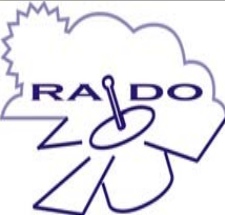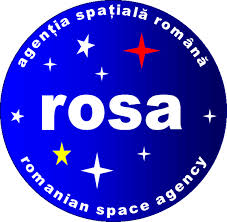Atmosphere Optics, Spectroscopy and Lasers Laboratory LOA-SL
|
LOA-SL' LIDAR SYSTEM
As in many scientific field, in the atmosphere science, a major progress is often driven through introduction of new or improved techniques involving both analytical laboratory experiments and field campaigns, too [as example, see the project "Physics and chemistry of the atmosphere: Training by Research" founded by the French Ministry for Foreign Affairs and the Nord-Pas-de-Calais Region, in the frame of the ARCUS, program developed by a network of laboratories of the North-Pas-de-Calais (2006-2008) aims to developing the scientific partner potential laboratories from Romania (Alexandru Ioan Cuza University of Iasi), Hungary and Czech Republic: http://www.phlam.univ-lille1.fr/ecolatmo ].
Furthermore, the most interesting and relevant atmospheric compounds are present in ultra-trace amounts such organic or inorganic radicals or the material forming nanometers water droplet or ice particles nucleation. Although in low concentrations, these compounds play a key role in the physico-chemistry of the atmosphere. In order to understand the source and transformation of aerosol constituents, the analysis of the distribution of a certain element among defined chemical species is still necessary. To understand and control a highly dynamic system as the atmosphere, remote and analytical techniques are highly required because of their current complexity, spatial and temporal ranges existing limit.
Atmospheric aerosols play an important role in many atmospheric processes due to their appreciable influence on Earth's radiation budget, air quality and visibility, clouds, precipitation and chemical processes in the troposphere. Therefore, vertically resolved measurements of physical and optical properties of the aerosols are still of great interest. Indeed, the 3D monitoring of regional air pollution in order to complement the ground-based stations is nowadays clearly demonstrated both by the key information concerning the atmospheric dynamics (as planetary boundary layer height definition and its variability) and the regional or long range transport aerosols load estimation. In addition, the interaction between the aerosols (regional/global) as a trigger of regional pollution and meteorology (i.e. extreme events as hail and strong thunderstorms) is still not well known and difficult to assess without high-resolution 3D fast atmospheric information.
In this context, the new LIDAR system developed in the framework of ROmanian LIdar NETwork (ROLINET) research project it is dedicated to monitoring the tropospheric aerosols and clouds (from 750 m to 12 km (daytime) - 15Km (night time) altitude.
LIDAR (LIght Detection And Ranging) is an optical remote sensing technology that measures properties of scattered pulsed laser light Because of their short wavelengths range (IR-UV-VIS), the LIDAR systems can highlight atmospheric compounds (aerosols, different type of particles, etc). Depending on the output power and efficiency at the reception, the sounding distance can reach up to tens of kilometers, and the response time is about the order of minutes. The received signals are “the answer” of the atmosphere at the interaction with the optical beam, thus including information about the type, shape and density of the spreaders.
The first information that can be highlighted by the most simple LIDAR system is the altitude of layers with different density or/and compositions. If different frequency channels were used by the detection module of the LIDAR system, a series of optical parameters could be calculated, such as the backscatter and extinction coefficients, the depolarization ratio and Angstrom parameter
The transmitter of our LIDAR system - LOASL Station, is a Nd:YAG laser used for generating laser pulses at 1064, 532 and 355 nm wavelength with 200 µJ, 100 µJ and respectively 35 µJ per pulse The pulse repetition rate is variable up to 30 Hz. The three laser beams are emitted co-axially and expanded 5 times before being transmitted into the atmosphere. The initial divergence of the 6 mm laser beam diameter of 0,75 mrad is thus improved 5 times by using a 3lbeam expander (BE) resulting thus a single beam of 30 mm diameter and a final low divergence of 0,15 mrad.
The specifications of transmitting and receiving parts of the LIDAR system.
LIDAR investigation of the GRÍMSVÖTN (64.416 N 17.333 W - South-Eastern Iceland) volcanic ash – 26.05.2011
RCS Time series - between 06:50-13:18 UTC, 26.05.2011
RCS time series (night profiles) for highlighting the fine volcanic dust in very low concentrations
Some results in collaboration with our partner, INOE - Laser Remote Sensing Department LIDAR investigation of the EYJAFJALLAJOKULL volcanic ash – 17.04.2010
|







